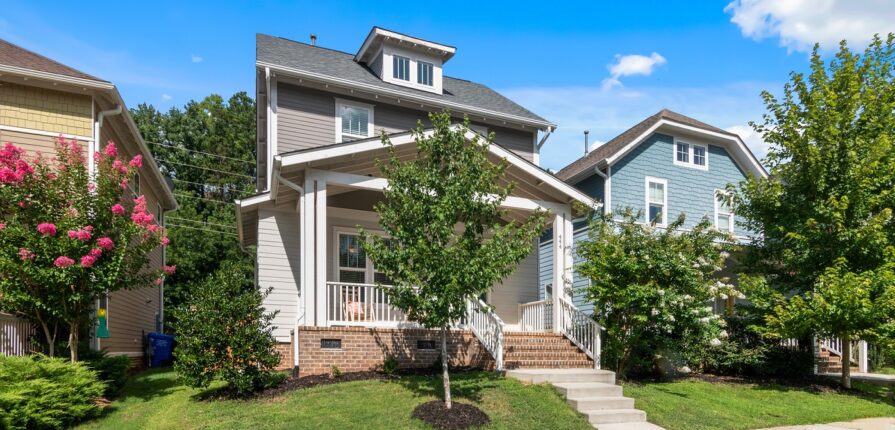Well-designed outdoor lighting can bring a lot of benefits to your home, venue, or commercial building: enhanced security, better curb appeal, and even increased property value. Some lighting installations are straightforward, and the most difficult part will be picking out the fixtures you want. But other properties can get a little more complicated. We’re here to help–with solutions for some of the common outdoor lighting challenges you might face.
Challenge #1: The great outdoors
Notice the key word “outdoor” that appears in the phrase “outdoor lighting.” Yeah, you know: out there with the wind, and rain, with storms and humidity, with burning sun in summer and freezing temps in winter. Outdoor lighting is up against a lot of factors: insects, larger pests, and exposure to the elements. The first outdoor lighting challenge you face is the simple fact that nature is great, but it involves a lot of wear-and-tear.
Fortunately, there’s a pretty simple two-step method for handling this challenge:
- Choose high-quality outdoor lighting fixtures, and
- Take good care of them with regular maintenance.
By the way, if you’re in the St. Louis area, we can handle the maintenance for you. Get in touch and ask about our annual maintenance package.
Challenge #2: Failed connectors
Whoever named lighting system components wasn’t too creative. Case in point: lighting connectors. It’s easy to guess what function they serve–they connect outdoor lighting fixtures to the power supply. To avoid failed connectors, it’s important to consider both the quality of the connectors and where they’re positioned.
Poorly designed, cheap connectors made from low-quality material will not last long in an outdoor environment. In fact, they probably won’t last too long anywhere. Certainly, the rigors of the outdoor world will speed their demise. Well-designed outdoor lighting systems will position the connectors defensively–that is, in more protected positions that reduce the impact of wind, rain, sleet, sun, and all that other outdoor stuff. Proper positioning of lighting connectors helps prevent exposure and deterioration.
Only an experienced outdoor lighting professional should deal with problems with your lighting connectors and wiring. We’re happy to help.
Challenge #3: Bugs, pests, and pets
Some types of ants are attracted to electricity, and like to build their mounds around lighting fixtures. Spiders appreciate lighting fixtures as mounts for their web-spinning endeavors. All sorts of insects see light fixtures as a cozy little place to hide out from bigger pests or bad weather.
Speaking of bigger pests, we think rabbits and squirrels are really cute. They’re also not very kind to outdoor lighting. They’ll chew through exposed wiring and dig around fixture supports. Pests like shrews and mice cause similar types of damage, and may even be able to get inside fixtures, especially if they’re not well-made and tightly fastened.
Here’s what to do about this challenge:
- Choose high-quality fixtures (no surprise here) because they have better designs and materials. They’ll be harder for these little varmints to break into and tougher to damage.
- Have your outdoor lighting system professionally installed, so that all wiring is properly buried.
- Keep fixtures clean and maintained. Clean off spider webs, pick up branches after a storm, make sure fixture supports are straight and mounting hardware is properly installed.
Finally, if you have ongoing problems with a particular type of pest, it might be time to call in some pest control help.
Challenge #4: Burnt-out light bulbs
If burnt-out light bulbs are a problem, the first thing to do is a system check. If you’re running old fixtures that still use incandescent bulbs, it’s time to upgrade. LED bulbs are energy efficient, can be adjusted to the color temperature and brightness you want, and have a long life. Some fixtures can be upgraded to LED bulbs with no problem. Other fixtures may be too old, and you’ll need to upgrade the fixture itself.
If your lighting system is fairly new and you’re using LED bulbs, you shouldn’t have an issue with burnt-out light bulbs. Sure, bulbs will need to be replaced as part of regular maintenance, but you shouldn’t have frequent bulb outages. If you do, there may be an issue with the other parts of your system, and it’s causing voltage spikes. It’s best to have a lighting professional take a look at your system, examine the components, identify the cause and repair it safely.
You may have noticed two recurring bits of advice: choose high-quality fixtures, and do regular maintenance. It’s good advice. When it comes to outdoor lighting, the money you save on cheap fixtures isn’t saved at all. You’ll have to spend it on repairing damage or replacing fixtures sooner rather than later. High-quality fixtures, on the other hand, cost more but are made from contractor-grade materials and often include lifetime warranties. When you combine great fixtures in a well-designed lighting system with regular maintenance, you’re already overcoming most of the outdoor lighting challenges out there.
St. Louis homeowners, business owners, and venue managers: we’re here to help with your outdoor lighting challenges. Get in touch for a free consultation.


— 1 Comment —